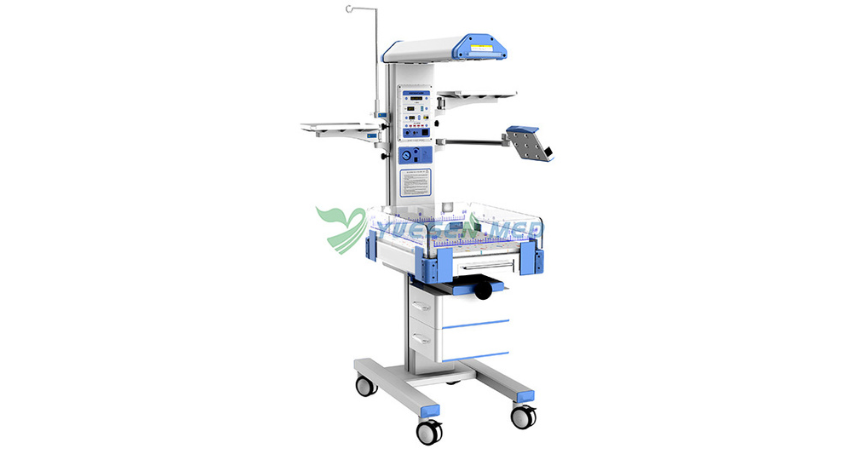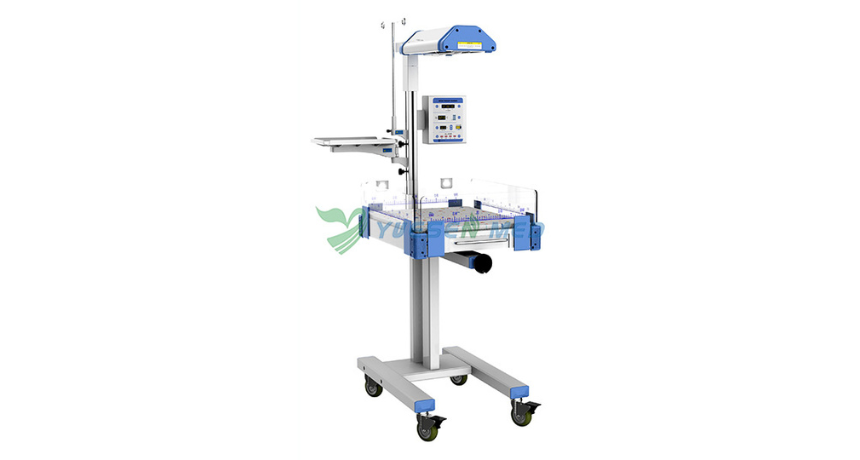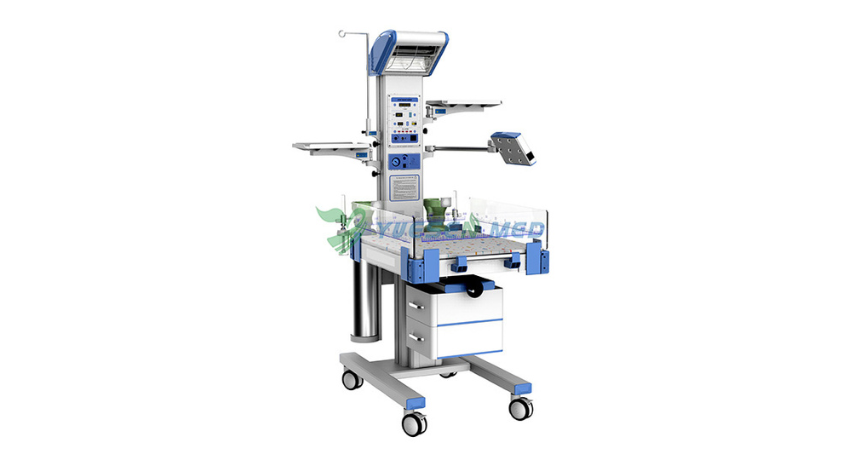Hot Products
YSX500D 50kW DR system set up and put into service in Cambodia.
YSENMED YSX500D 50kW digital x-ray system has been successfully set up and put into service in a hospital in Cambodia.
YSX056-PE serving as a vehicle-mounted x-ray in the Philippines
YSX056-PE 5.6kW portable x-ray unit has been adapted to fit on a truck, to provide mobile x-ray examination service for remote communities in the Philippines.
X Ray Machine To Zimbabwe
x ray machine, 50KW x ray machine
Microscope To Malawi
Achromatic objectives: 4X、10X、40X(S), 100X(S、Oil) Wide field eyepiece: WF10X(WF16X for option) Eyepiece head: Sliding binocular head inclined at 45° Stage: Double layer mechanical stage size 140X140mm, moving range 75X45mm Focusing: Coaxial coarse and
Automating Precision: How Fully Automatic Chemiluminescence Analyzers Are Improving Medical Diagnostics
Views : 1383
Update time : 2024-10-23 16:37:00
In the fast-paced world of medical diagnostics, precision and speed are paramount. Enter fully automatic chemiluminescence analyzers—these cutting-edge machines are revolutionizing how we conduct tests and interpret results. But what exactly are they, and how are they changing the landscape of healthcare? Let's dive deep into this fascinating topic!

What Are Fully Automatic Chemiluminescence Analyzers?
Chemiluminescence analyzers are devices that use chemical reactions to produce light. This light emission is measured to determine the concentration of specific substances in a sample, typically blood or other bodily fluids. Fully automatic systems take this a step further by automating the entire process, from sample preparation to result reporting.
The Science Behind Chemiluminescence
At its core, chemiluminescence is all about chemical reactions that emit light. Imagine a glow stick: when you snap it, the chemicals inside react, producing a bright glow. In medical diagnostics, this principle is harnessed to detect various biomarkers. The more precise the reaction, the more reliable the results!
Why Automate?
You might wonder, why go fully automatic? Well, automation brings several benefits to the table:
- Increased Efficiency: Manual testing can be time-consuming. Automation speeds up the process, allowing labs to handle more samples in less time.
- Reduced Human Error: We're all human, and mistakes happen. Automation minimizes the risk of errors that can occur during manual testing.
- Consistency: Automated systems deliver consistent results, which is crucial for accurate diagnostics.
Key Advantages of Fully Automatic Chemiluminescence Analyzers
1. Enhanced Accuracy
One of the standout features of these analyzers is their accuracy. With precise measurements and advanced calibration techniques, they provide reliable results that healthcare professionals can trust.
2. Rapid Turnaround Times
In diagnostics, time is often of the essence. Fully automatic systems can process samples quickly, meaning patients get their results faster. This is particularly important in emergency situations where every minute counts.
3. High Throughput
Modern healthcare facilities often deal with a high volume of tests. Fully automatic chemiluminescence analyzers can handle numerous samples simultaneously, significantly increasing laboratory productivity.
4. User-Friendly Interfaces
Today's analyzers come equipped with intuitive interfaces that make them easy to operate. Even staff members with minimal training can navigate these systems, making onboarding a breeze.
5. Versatility
These analyzers aren't just for one type of test. They can be used for a wide range of assays, from hormone levels to infectious disease markers, making them a versatile tool in any lab.
Applications in Medical Diagnostics
1. Hormone Testing
Hormone levels can tell us a lot about a person's health. Chemiluminescence analyzers are widely used to measure hormones like insulin and cortisol, providing insights into metabolic disorders and stress responses.
2. Infectious Disease Detection
In today's world, the ability to quickly detect infectious diseases is critical. These analyzers can identify pathogens, aiding in the rapid diagnosis and treatment of conditions like HIV and hepatitis.
3. Tumor Markers
Detecting cancer early can be a game-changer. Chemiluminescence analyzers help identify tumor markers, allowing for early intervention and better patient outcomes.
4. Autoimmune Disorders
Autoimmune conditions can be tricky to diagnose. These analyzers assist in identifying specific antibodies, helping clinicians understand and manage these complex diseases.
The Role of Automation in the Future of Diagnostics
1. Integration with AI
Imagine a future where your analyzer not only processes samples but also learns from the data it collects. Integrating artificial intelligence with fully automatic chemiluminescence analyzers could lead to even more accurate diagnostics and personalized medicine.
2. Remote Monitoring
With advances in telemedicine, there's potential for these analyzers to be used in remote settings. Patients could have their samples analyzed from home, receiving results without needing to visit a clinic.
3. Cost-Effectiveness
As technology advances, the cost of these analyzers is likely to decrease, making them accessible to more healthcare facilities. This could democratize access to high-quality diagnostics, especially in underserved areas.
Challenges and Considerations
1. Initial Investment
While the benefits are clear, the initial cost of purchasing fully automatic chemiluminescence analyzers can be a barrier for some labs. However, the long-term savings and efficiency gains often outweigh this initial investment.
2. Training Requirements
While these systems are user-friendly, staff still need training to operate them effectively. Ongoing education is crucial to ensure optimal performance and accurate results.
3. Maintenance and Calibration
Like any sophisticated equipment, these analyzers require regular maintenance and calibration to ensure they function correctly. Labs must be prepared for this ongoing commitment.
Conclusion
Fully automatic chemiluminescence analyzers are at the forefront of transforming medical diagnostics. With their ability to enhance accuracy, speed up processes, and reduce human error, they are proving to be invaluable tools in modern healthcare. As we look to the future, the integration of AI and remote monitoring could further revolutionize how we approach diagnostics. While challenges remain, the benefits far outweigh them, making these analyzers a worthy investment for any medical facility. So, as we continue to embrace technology in healthcare, one thing is clear: the future of diagnostics is bright, and fully automatic chemiluminescence analyzers are leading the way!
FAQ
What is a fully automatic chemiluminescence analyzer?
A fully automatic chemiluminescence analyzer is a sophisticated device used in medical laboratories to perform tests on biological samples, such as blood or urine. It utilizes chemical reactions that emit light to measure the concentration of specific substances, providing results quickly and accurately without the need for manual intervention.
How do chemiluminescence analyzers improve diagnostic accuracy?
Chemiluminescence analyzers improve diagnostic accuracy by employing precise measurement techniques and advanced calibration methods. These systems minimize human error, ensuring consistent results across tests. The automation of processes also reduces variability, which is crucial for reliable diagnostics.
What types of tests can be performed using these analyzers?
Fully automatic chemiluminescence analyzers can perform a wide range of tests, including hormone level assessments, infectious disease detection, tumor marker identification, and autoimmune disorder testing. Their versatility makes them valuable tools in various medical fields, enabling comprehensive patient evaluations.
Are there any limitations to using fully automatic chemiluminescence analyzers?
While fully automatic chemiluminescence analyzers offer many advantages, they do have some limitations. The initial investment cost can be significant, and labs must ensure proper maintenance and calibration to maintain accuracy. Additionally, staff training is necessary to operate these systems effectively, which can be a challenge in some settings.
How do these analyzers impact patient care?
By providing faster turnaround times and more accurate results, fully automatic chemiluminescence analyzers significantly enhance patient care. Quick and reliable diagnostics enable healthcare providers to make timely decisions regarding treatment, leading to improved patient outcomes and more efficient healthcare delivery.

What Are Fully Automatic Chemiluminescence Analyzers?
Chemiluminescence analyzers are devices that use chemical reactions to produce light. This light emission is measured to determine the concentration of specific substances in a sample, typically blood or other bodily fluids. Fully automatic systems take this a step further by automating the entire process, from sample preparation to result reporting.
The Science Behind Chemiluminescence
At its core, chemiluminescence is all about chemical reactions that emit light. Imagine a glow stick: when you snap it, the chemicals inside react, producing a bright glow. In medical diagnostics, this principle is harnessed to detect various biomarkers. The more precise the reaction, the more reliable the results!
Why Automate?
You might wonder, why go fully automatic? Well, automation brings several benefits to the table:
- Increased Efficiency: Manual testing can be time-consuming. Automation speeds up the process, allowing labs to handle more samples in less time.
- Reduced Human Error: We're all human, and mistakes happen. Automation minimizes the risk of errors that can occur during manual testing.
- Consistency: Automated systems deliver consistent results, which is crucial for accurate diagnostics.
Key Advantages of Fully Automatic Chemiluminescence Analyzers
1. Enhanced Accuracy
One of the standout features of these analyzers is their accuracy. With precise measurements and advanced calibration techniques, they provide reliable results that healthcare professionals can trust.
2. Rapid Turnaround Times
In diagnostics, time is often of the essence. Fully automatic systems can process samples quickly, meaning patients get their results faster. This is particularly important in emergency situations where every minute counts.
3. High Throughput
Modern healthcare facilities often deal with a high volume of tests. Fully automatic chemiluminescence analyzers can handle numerous samples simultaneously, significantly increasing laboratory productivity.
4. User-Friendly Interfaces
Today's analyzers come equipped with intuitive interfaces that make them easy to operate. Even staff members with minimal training can navigate these systems, making onboarding a breeze.
5. Versatility
These analyzers aren't just for one type of test. They can be used for a wide range of assays, from hormone levels to infectious disease markers, making them a versatile tool in any lab.
Applications in Medical Diagnostics
1. Hormone Testing
Hormone levels can tell us a lot about a person's health. Chemiluminescence analyzers are widely used to measure hormones like insulin and cortisol, providing insights into metabolic disorders and stress responses.
2. Infectious Disease Detection
In today's world, the ability to quickly detect infectious diseases is critical. These analyzers can identify pathogens, aiding in the rapid diagnosis and treatment of conditions like HIV and hepatitis.
3. Tumor Markers
Detecting cancer early can be a game-changer. Chemiluminescence analyzers help identify tumor markers, allowing for early intervention and better patient outcomes.
4. Autoimmune Disorders
Autoimmune conditions can be tricky to diagnose. These analyzers assist in identifying specific antibodies, helping clinicians understand and manage these complex diseases.
The Role of Automation in the Future of Diagnostics
1. Integration with AI
Imagine a future where your analyzer not only processes samples but also learns from the data it collects. Integrating artificial intelligence with fully automatic chemiluminescence analyzers could lead to even more accurate diagnostics and personalized medicine.
2. Remote Monitoring
With advances in telemedicine, there's potential for these analyzers to be used in remote settings. Patients could have their samples analyzed from home, receiving results without needing to visit a clinic.
3. Cost-Effectiveness
As technology advances, the cost of these analyzers is likely to decrease, making them accessible to more healthcare facilities. This could democratize access to high-quality diagnostics, especially in underserved areas.
Challenges and Considerations
1. Initial Investment
While the benefits are clear, the initial cost of purchasing fully automatic chemiluminescence analyzers can be a barrier for some labs. However, the long-term savings and efficiency gains often outweigh this initial investment.
2. Training Requirements
While these systems are user-friendly, staff still need training to operate them effectively. Ongoing education is crucial to ensure optimal performance and accurate results.
3. Maintenance and Calibration
Like any sophisticated equipment, these analyzers require regular maintenance and calibration to ensure they function correctly. Labs must be prepared for this ongoing commitment.
Conclusion
Fully automatic chemiluminescence analyzers are at the forefront of transforming medical diagnostics. With their ability to enhance accuracy, speed up processes, and reduce human error, they are proving to be invaluable tools in modern healthcare. As we look to the future, the integration of AI and remote monitoring could further revolutionize how we approach diagnostics. While challenges remain, the benefits far outweigh them, making these analyzers a worthy investment for any medical facility. So, as we continue to embrace technology in healthcare, one thing is clear: the future of diagnostics is bright, and fully automatic chemiluminescence analyzers are leading the way!
FAQ
What is a fully automatic chemiluminescence analyzer?
A fully automatic chemiluminescence analyzer is a sophisticated device used in medical laboratories to perform tests on biological samples, such as blood or urine. It utilizes chemical reactions that emit light to measure the concentration of specific substances, providing results quickly and accurately without the need for manual intervention.
How do chemiluminescence analyzers improve diagnostic accuracy?
Chemiluminescence analyzers improve diagnostic accuracy by employing precise measurement techniques and advanced calibration methods. These systems minimize human error, ensuring consistent results across tests. The automation of processes also reduces variability, which is crucial for reliable diagnostics.
What types of tests can be performed using these analyzers?
Fully automatic chemiluminescence analyzers can perform a wide range of tests, including hormone level assessments, infectious disease detection, tumor marker identification, and autoimmune disorder testing. Their versatility makes them valuable tools in various medical fields, enabling comprehensive patient evaluations.
Are there any limitations to using fully automatic chemiluminescence analyzers?
While fully automatic chemiluminescence analyzers offer many advantages, they do have some limitations. The initial investment cost can be significant, and labs must ensure proper maintenance and calibration to maintain accuracy. Additionally, staff training is necessary to operate these systems effectively, which can be a challenge in some settings.
How do these analyzers impact patient care?
By providing faster turnaround times and more accurate results, fully automatic chemiluminescence analyzers significantly enhance patient care. Quick and reliable diagnostics enable healthcare providers to make timely decisions regarding treatment, leading to improved patient outcomes and more efficient healthcare delivery.
Related News
Read More >>
 What is the Difference Between Radiant Warmer and Phototherapy?
What is the Difference Between Radiant Warmer and Phototherapy?
Apr .19.2025
Radiant warmers and phototherapy are crucial in neonatal care, but they serve different purposes. Let's dive into the nitty-gritty of these two techniques and explore how they differ, and when each is appropriate.
 YSX056-PE portable digital x-ray unit set up in the Philippines
YSX056-PE portable digital x-ray unit set up in the Philippines
Apr .19.2025
YSX056-PE portable digital x-ray unit has been set up in a hospital in the Philippines and the good quality images please the doctors.
 Is an Infant Radiant Warmer Good for Babies' Health?
Is an Infant Radiant Warmer Good for Babies' Health?
Apr .13.2025
What exactly is the infant radiant warmer, and how does it contribute to a baby's health? Let's dive into this topic and explore the ins and outs of infant radiant warmers.
 What is an Infant Radiant Warmer?
What is an Infant Radiant Warmer?
Apr .12.2025
One of the unsung heroes in neonatal care is the infant radiant warmer. But what exactly is it? Let's dive into the world of infant care and explore the ins and outs of this vital device.



